Announced in July 2019 to join Nikon’s expanding lineup of mirrorless Z mount lenses, the Nikkor Z 85mm F1.8 S is a medium-speed short-telephoto prime for portraiture and indoor sports. It features a relatively complex optical design that includes two ED (extra-low dispersion) elements to reduce chromatic aberration. The lens also has Nikon’s Nano Crystal and Super Integrated coatings to suppress flare and ghosting.
Like others in the lineup, the Nikkor Z 85mm F1.8 S is designed for both stills and video use and adopts two stepping-type AF motors for smooth and quiet focusing. This S-series prime is dust- and moisture-resistant, and is available now for around $799 / 849€.
You can view the results for all tested lenses and create your own comparisons and in-depth analyses using our interactive image lens comparison tool.
Key specifications:
- 12 elements in 8 groups
- Two ED elements
- Nano Crystal and Super Integrated coatings
- Nine blade, rounded aperture
- Customizable control ring
- Twin stepping motors
- Dust- and moisture-resistant
- 67 mm filter thread
- Minimum focus distance: 0.8 m (2.62 ft)
- Weight: 470 grams (1.03 lb)
Test results
We tested the Nikkor Z 85mm F1.8 S on the high-resolution Nikon Z7, where the lens combined with the 47 MP sensor achieved a DXOMARK score of 49. This short tele has very high and uniform sharpness at all apertures and ranks as one the best-performing Nikkors in our database.
Modern short teles like this one rarely display any noticeable distortion, and indeed, this lens has only a very small amount (measured at 0.1%). With two ED elements, it has very well controlled levels of lateral chromatic aberration at all apertures and the lens has low vignetting (just -1.1 EV) at the maximum aperture. It also has excellent transmission, measured at 1.9 TStop. Overall, this Nikkor lens is a top-tier performer which can rival more expensive models in optical quality.
As always, it’s worth looking through the more detailed data to see how the lens performs at various aperture settings.
In-depth comparisons
We’ve compared the made for mirrorless Nikon Nikkor 85mm F1.8 S with a similar model from rival Sony, the Sony FE 85mm F1.8 mirrorless on the 61 MP Sony A7R IV. At around $600, the Sony is very competitively priced and it’s targeting a similar market. We’ve also compared the 85mm Nikkor with the highly regarded Art-series Sigma 85mm F1.4 DG HSM A on the 47 MP Nikon D850. Although faster and considerably larger and heavier, the Sigma is available at a competitive price of around $1,200 or 1,249 Euros. (Nikon doesn’t yet have a f/1.4 model in its Z series line up.)
You can see an overview of this comparison in our database.
Sharpness
As a high-grade S-series lens made for Nikon’s full-frame mirrorless models, it should come as little to surprise to see the Nikkor Z 85mm F1.8 S performing exceptionally well in our sharpness (acutance) testing. Indeed, it has excellent sharpness at all apertures, save perhaps for f/22 where the effects of diffraction are clearly noticeable — though that’s to be expected.
Wide open at f/1.8, it achieves just under 80% acutance in the center falling to just over 75% mid-frame and on to the corners. In that respect it matches the highly regarded Sigma (on the Nikon D850 with a similar-resolution sensor) at f/1.4, though when that model is closed down to the same aperture it’s slightly sharper in the center than the Nikkor. The Sony also performs well wide open.
Closing the aperture down a stop or so, the Nikkor improves in sharpness slightly in the center but it’s not until f/4-5.6 that the outer zones catch up. At f/8, the Nikkor has outstanding uniformity across the image field right out to the corners, but there’s a price to pay with a very slight drop in sharpness beneath the 80% acutance mark, though it’s the same with the Sigma and the Sony.
Chromatic aberration
Fixed focal lenses like this typically have low levels of lateral chromatic aberration and it’s no longer rare to see ED glass used in the construction to reduce it further. The Nikkor’s complex design and ED glass keep lateral chromatic aberration to very low levels at all apertures. It’s practically non-existent in the centers but there’s some trace towards the corners — and even there it’s very low. In many ways the Nikkor is comparable to the Sigma in that regard, which goes to show just how good the Sigma is. By way of contrast, the Sony has somewhat wayward fringing that is likely the cause of the drop in sharpness in the outer zones, but even then the fringing cannot be called excessive.
Geometric distortion
Short telephoto lenses, especially around the 85mm focal length rarely exhibit much in the way of distortion, and that’s the case here. While the Sigma has no traces to speak of, the Nikkor has only very slight (0.1%) pincushion distortion. Even the Sony is still relatively low, though 0.3% is enough that it may be visible at times, particularly where there are straight elements that run parallel to the edges of the frame.
Vignetting (corner shading)
With the Nikkor Z 85mm and Nikon Z7 combination, vignetting is relatively low at the initial aperture, maxing at just -1.1 EV in the corners, compared with -2 EV for the Sony and -1.4 EV for the Sigma at f/1.4. Falloff from the center isn’t quite as rapid as it is with the Sony, and although very similar to the Sigma wide open at f/1.4, there’s less shading right in the corners. Like the Sigma, vignetting is more or less mitigated by f/2.8, whereas with the Sony it never really clears up at all. Although vignetting is usually at its highest wide open, for consistency, we’ve shown the falloff (from the center) at f/1.8 for all three lenses in the graph below. Being stopped a little, the larger-aperture Sigma has a slight advantage over the other two.
Transmission
In day to day use transmission isn’t a practical concern for photographers; however, it is interesting to note that on the Nikon Z7 the 12-element Nikkor lens has very high transmission measured at T1.9. That’s ahead of the simpler Sony 85mm on the A7R IV, which measures a loss of -0.3 EV, effectively making that lens T2.0. The Sigma on the other hand loses over half a stop (-0.6 EV) on the D850 DSLR, effectively making that lens T1.7 at the maximum aperture.
Conclusion
With the move to mirrorless, Nikon has mostly concentrated on f/4 zooms and f/1.8 primes—at least initially, anyway. This is in contrast to Canon’s approach, with high-speed lenses designed to attract the attention of professional users. Be that as it may, from our tests the Nikkor Z 85mm F1.8 S is certainly a well-corrected lens with excellent sharpness at all apertures. Although the price might look a little precipitous for an f/1.8 lens, it ranks alongside the best from Zeiss, Canon, and Sony and is one of the finest fixed focal length primes available at any price.
In this review, we have compared the Nikkor Z 85mm F1.8 S mounted on a Nikon Z7 to its closest rivals from other brands. Remember that those lenses may be used on different cameras, or in some cases on different camera systems using different mounts, so those comparisons are not strictly applicable.
As usual, you can create your own comparisons and in-depth analyses using our interactive image lens comparison tool.


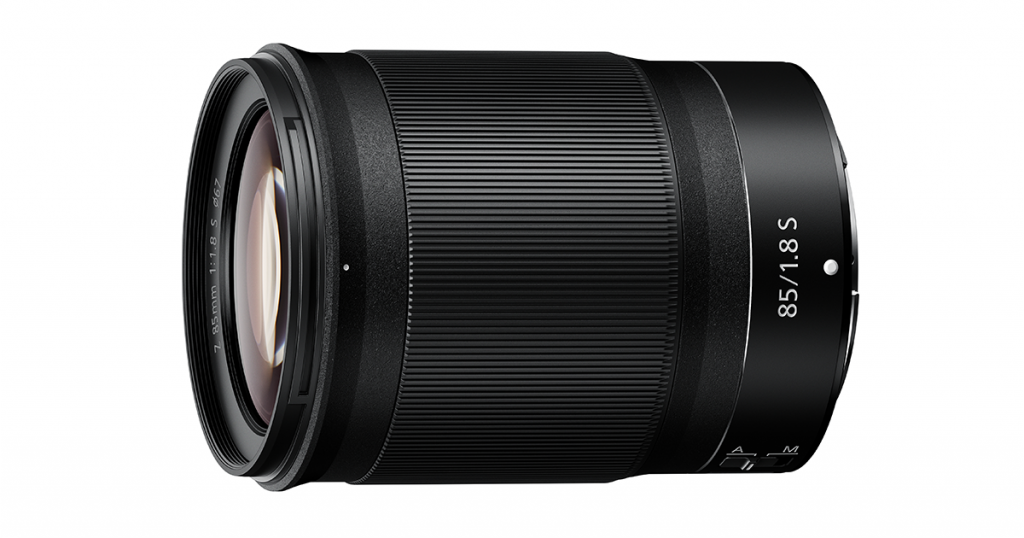


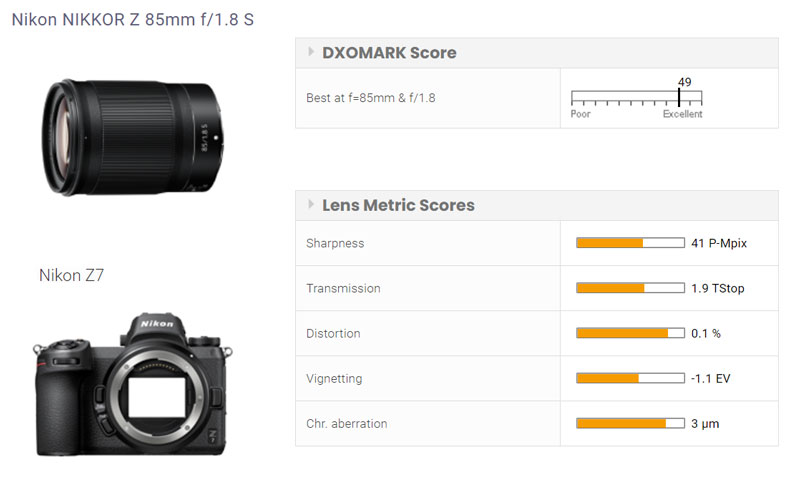
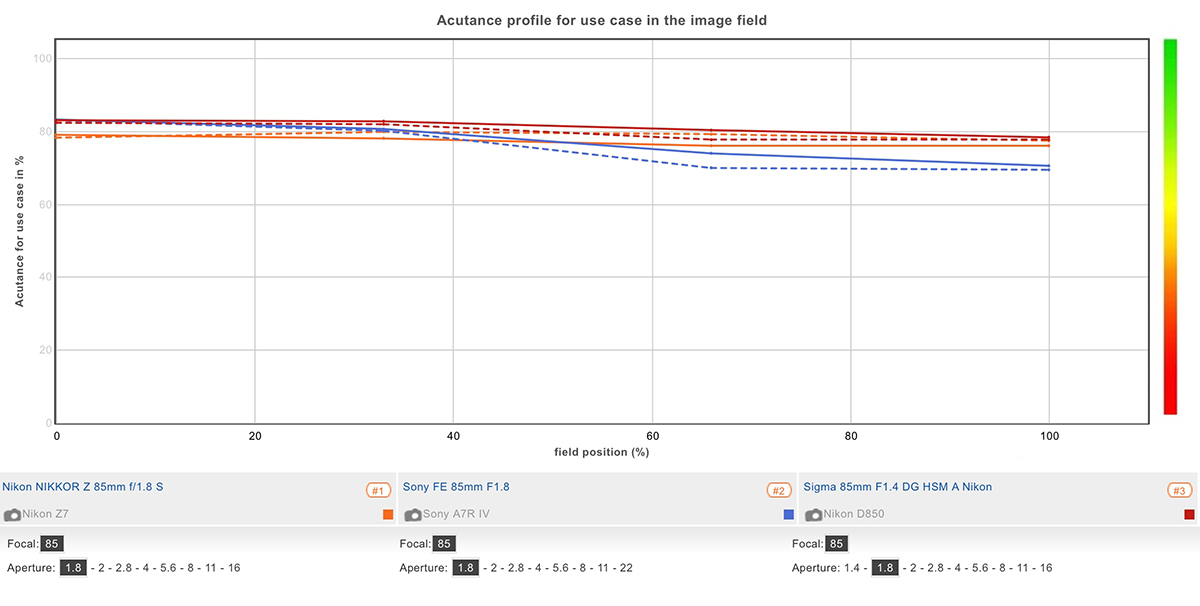
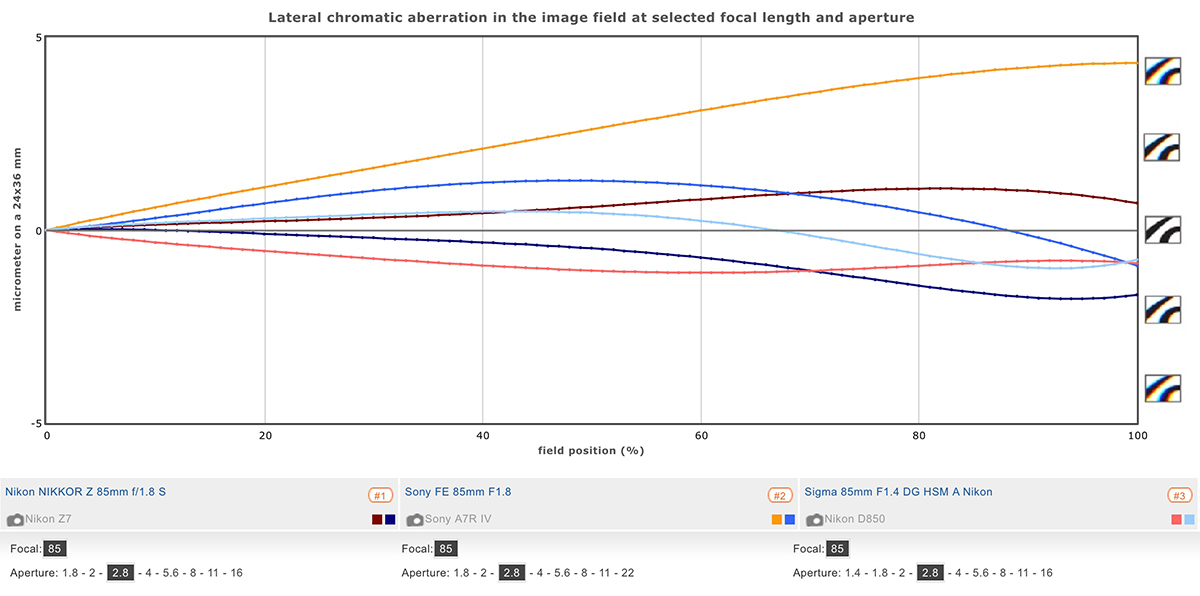
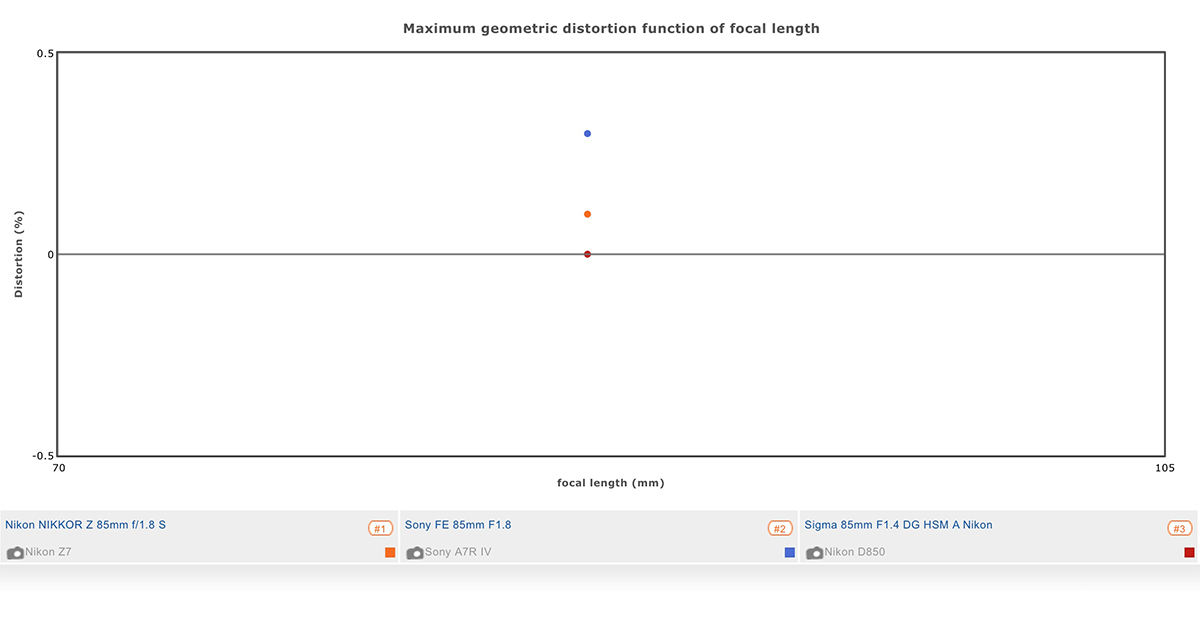
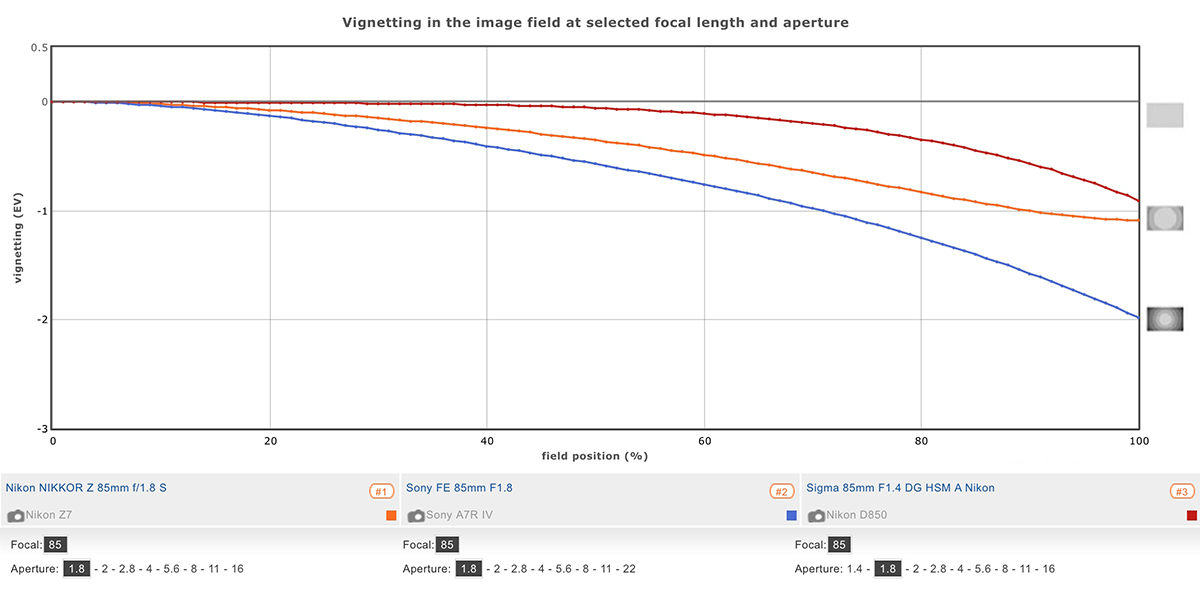
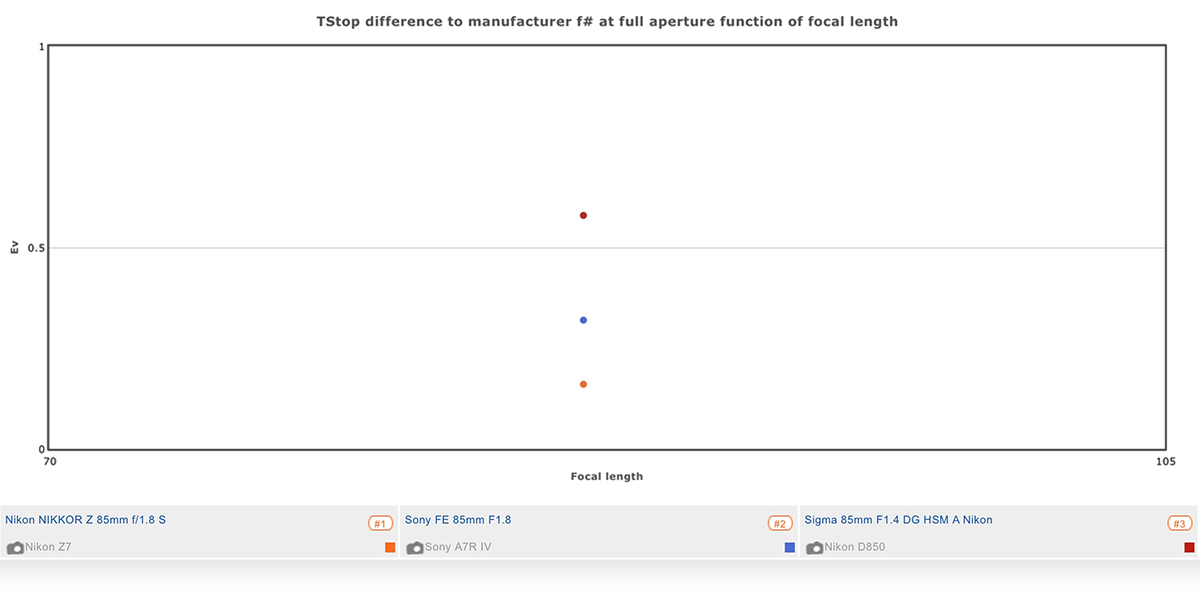
DXOMARK encourages its readers to share comments on the articles. To read or post comments, Disqus cookies are required. Change your Cookies Preferences and read more about our Comment Policy.